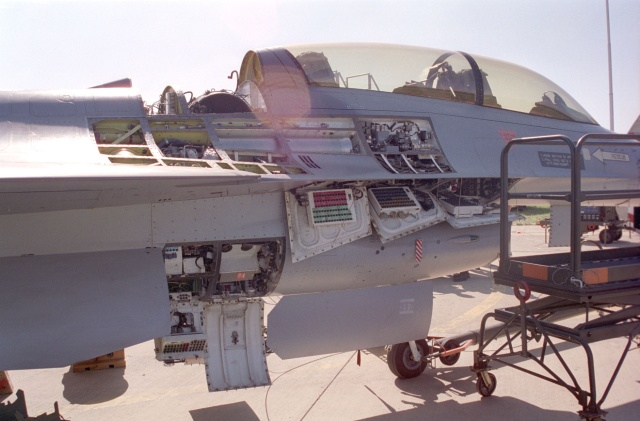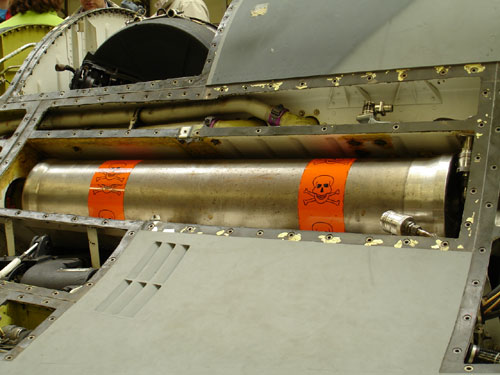EPU
F-16 EPU (Emergency Power Unit) is actually runs on a highly toxic, corrosive and hazardous fuel, Hydrazine (H-70 - 70% Hydrazine (N2H4) and 30% water, count by weight), F-16 EPU contains ~3000 PSI of Hydrazine fuel, can tun approximately 10 minutes under normal load requirements, tank compartment on the right hand side of the F-16.
Hydrazine is a monopropellant, meaning it don't need to mixed and burned to release the energy contained in its chemical bonds, monopropellant also mean it decomposes very rapidly, producing a large amount of its own energy-containing high-pressure (heat) gas, and those high-pressure (heat) gas push the generator and supplies hydraulic pressure.
The reason why F-16 use Hydrazine (H-70) as EPU fuel is because hydrazine can start the EPU to operation condition only in 2 seconds + Very reliable, due to it's highly reactivity characteristic. Which other type of fuel can't do.
BUT it have some safety concerns, first the EPU exhaust temperature can but up to 1600°F / 870°C, which higher then all other exhaust temperature (except engine exhaust).
ALSO it is highly toxic and highly corrosive, potential routes of hydrazine exposure include dermal, ocular, inhalation and ingestion.
Hydrazine exposure can cause skin irritation/contact dermatitis and burning, irritation to the eyes/nose/throat, nausea/vomiting, shortness of breath, pulmonary edema, headache, dizziness, central nervous system depression, lethargy, temporary blindness, seizures and coma. Exposure can also cause organ damage to the liver, kidneys and central nervous system.

